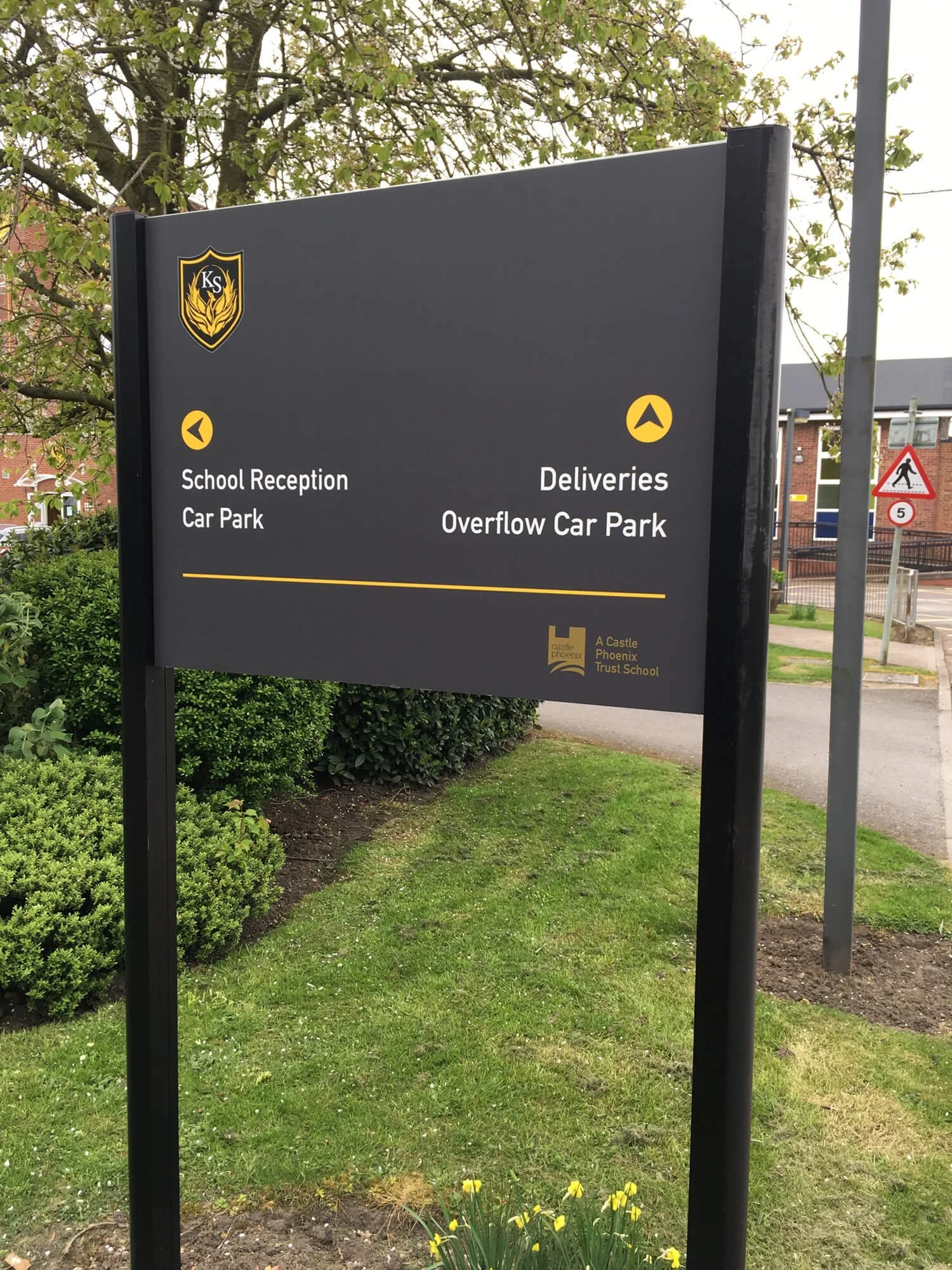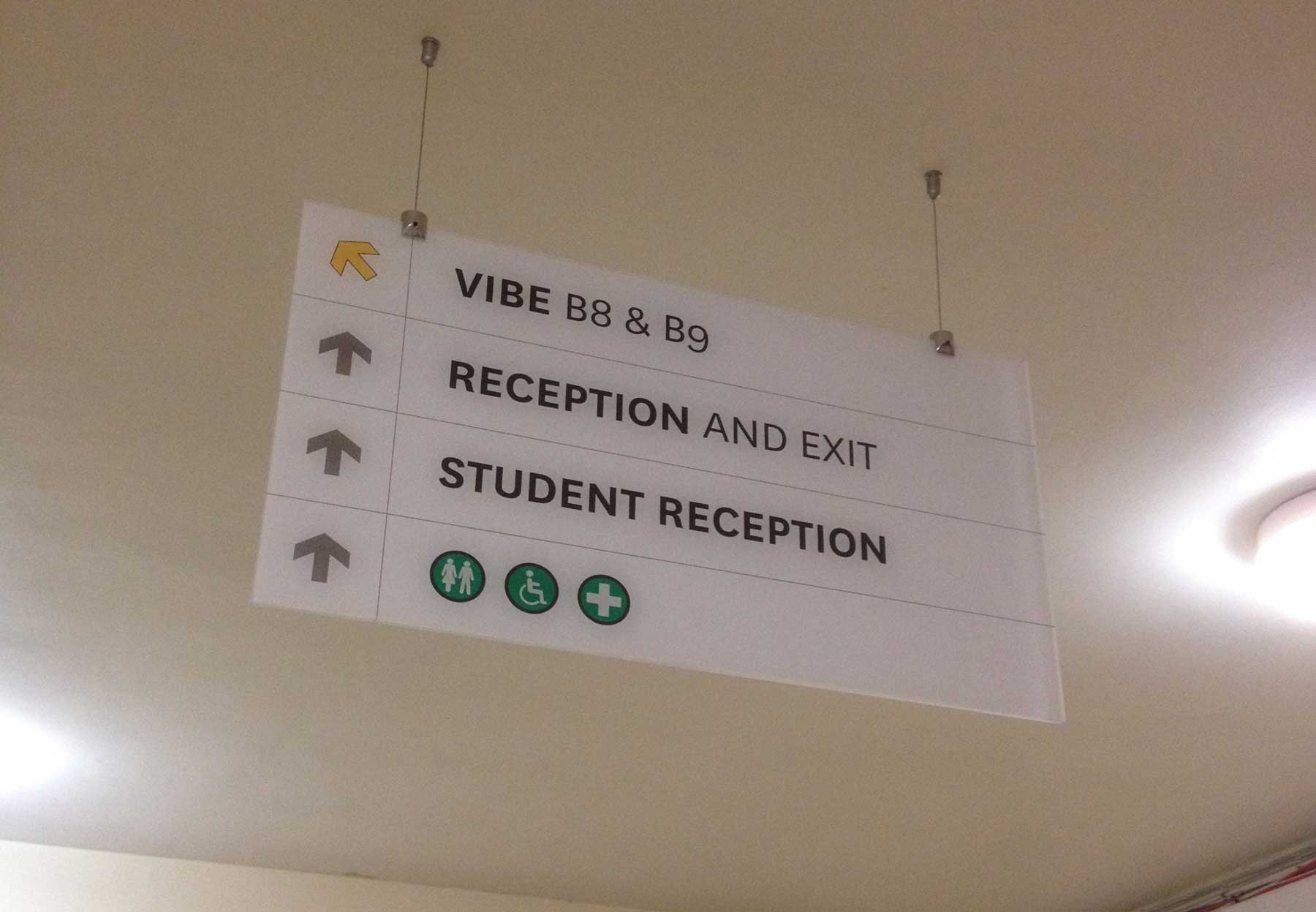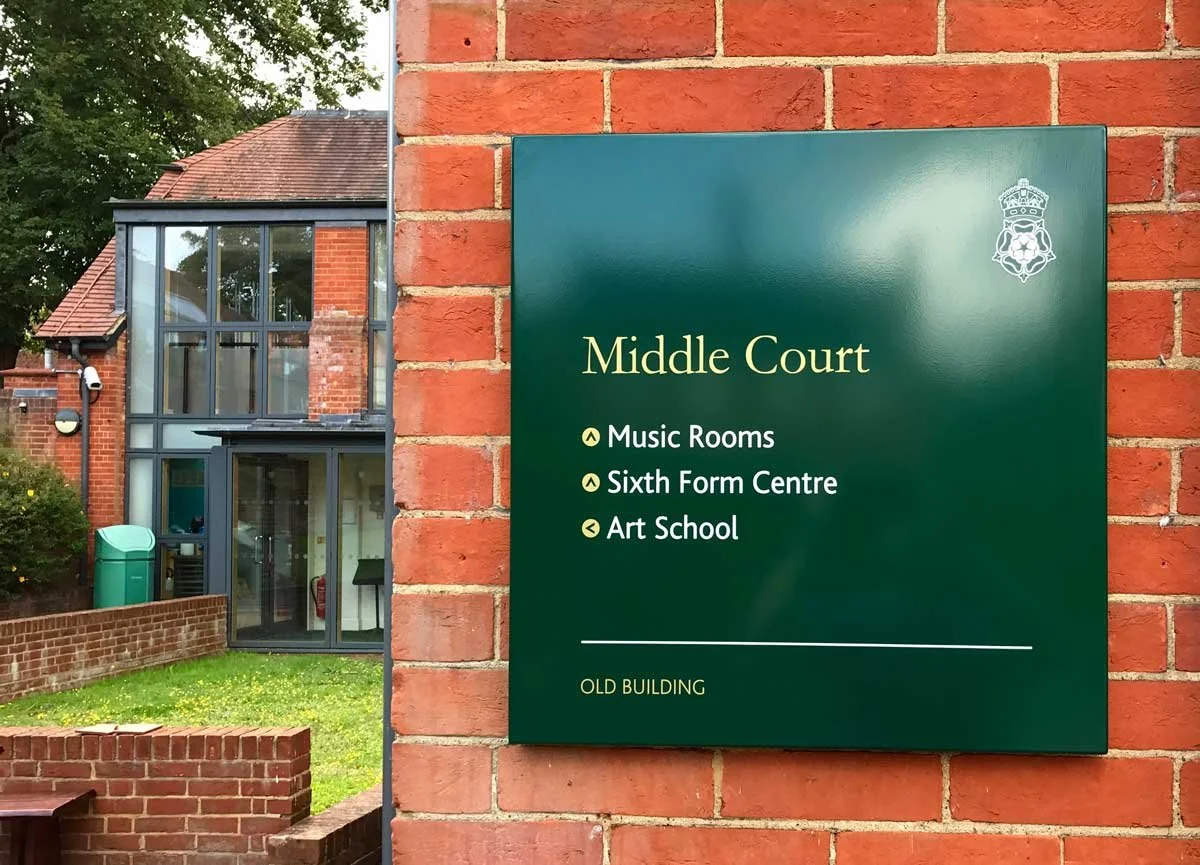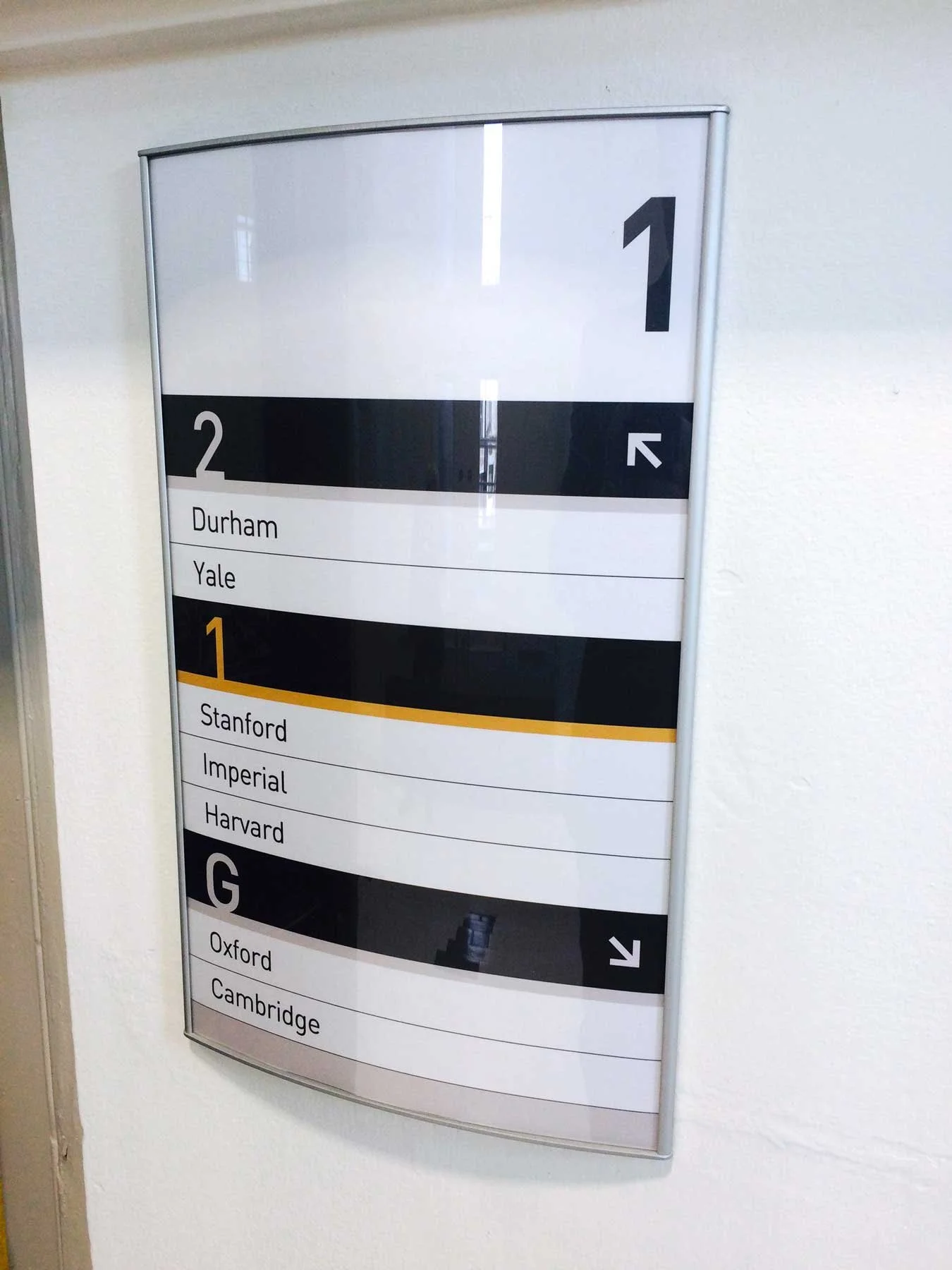What is wayfinding signage and do you need it in your school?
Wayfinding signs helps your visitors, staff and students navigate around your building in the most efficient manner. When it’s done right most people don’t even know that they are using it.
But where do you start and how do you make sure you get it right?
As sign makers for schools and educators around all things school brand we’ll give you a quick overview of what goes into creating wayfinding signs and some ideas to think about when considering yours.
Let’s get started.
What is a wayfinding sign?
Any sign that helps you to navigate through a space is a wayfinding sign. As it is performing a function rather than conforming to a set specification wayfinding signs can take many forms, however, there are four key types of sign that would typically make up a wayfinding scheme, each one designed to do a certain job and are located at strategic points inside or outside your building.
Informational signs
These are signs that carry information about that location, for example an entrance gate sign (external) or a sign that displays the faculty or department name (internal). Door signs are also included in this group.
Directional signs
These signs give you a direction of travel. Usually conveyed with arrows or other methods for pointing out which way you need to go to reach a particular destination. These can also be called directory signs.
Warning signs
These signs include pointing out fire escape routes, general warnings and information about other rules that you need to make clear and could include behaviour, lunchtime and playground rules (depending on phase).
Identification signs
These give details about where individual locations are, such as different blocks or rooms. These can include site plans or floor maps.
What do you need to think about before you install your wayfinding signs?
Guiding visitors around your building involves solving lots of problems so make sure that you allow enough time to consider what you need to achieve. If you are getting a signage package as part of your new build then check that both the designs and the final product will be fit for purpose.
Make sure each sign is the right size for where it will be seen. It can be a good idea to make temporary signs to allow you to test a route, font size or weight, sign design and size or location. Each of these factors will need to be carefully considered for your school wayfinding.
Consider carefully what you need to achieve and make sure your signs are located at the most strategic locations. In this way you can avoid adding signs that don’t need to be there or that add little to a visitors journey experience.
Make sure you think about all of the people who will need to use the building, from students and staff to visitors.
Think about how you can use colour effectively in your scheme. Coding certain routes or zones can help aid legibility or speed up the decision-making process (i.e you know that you are following the red route so you only look for red signs).
Make sure you are being consistent with your language and naming protocol. Simplify where possible and don’t add any content to your wayfinding that absolutely doesn’t need to be there.
Avoid adding anything that might change. It is usually better to use classroom numbers than subjects, which might switch rooms from year to year.
Many schools can contain examples of different wayfinding signs from previous years. It can be well worth doing an audit of your signage to check what is still relevant and what can be removed. It might surprise you how many signs in your school are either irrelevant, unclear or misleading.
How much do school wayfinding signs cost?
The cost of your school wayfinding sign project is comprised of planning and design, production and installation. The design costs can start at just a few hundred pounds for small projects but if you need a comprehensive scheme for your whole building or site then expect to pay upwards of £1500 for the planning, designs and project management. Larger, more complex wayfinding projects can cost £5000 – £20,000 for this phase but this is not common for school projects.
Production costs will depend on whether you opt for a dedicated sign system or choose fixed, printed signs. For both options you will need to consider the up-front cost and the cost to update your signs if you decide to move classrooms or departments around your building. System signs vary a lot with an A5-size door sign costing anywhere between £15 and £60 or more. Printed signs can be significantly cheaper with the same size of sign costing between £4 and £20.
Installation costs will follow the complexity and scope of your project. These costs will usually be based on how many hours or days it will take to install your signs and the size of team involved. Budget £350 – £500 per day for a two-man team of trained sign fitters depending on your location. If you need it, access equipment would add to the cost. For example, hiring a scissor lift costs between £150 and £225 per day plus the cost of delivering and collecting it from your site, which can cost £45 – £75 each way depending on the distance from your local depot.
Why choose a dedicated system sign?
A system sign has been carefully designed to allow you to change some or all of the information without needing to replace the entire sign. If you have visited any airport or train station then it’s likely you will have used a system sign to navigate. They usually offer better levels of security and so can be a good option in buildings where vandalism or high traffic is a factor. System signs can also look better aesthetically, however the additional costs can sometimes outweigh the benefit, either if you don’t need to update your signs very often or if the cost of buying several replacement printed signs is still less than the single system sign.
It’s important to understand your design requirements; some systems signs allow you to insert a full colour print that sits behind a protective screen (allowing you to print your own content) while others are designed only to allow cut vinyl text, direct print or etching to be applied to the surface of the sign itself (meaning that you have to order replacement sections from a third-party).
Most system signs are based on aluminium extrusions and are sold in modular sizes, allowing you to create a cohesive family of signs that follow clear design rules and can be made to fit the space available, including wall mounted and ceiling hung options.
Pros of system signs
They can look nicer and offer modular options
They can be updated without replacing the entire sign
They are a designed product
They offer anti-tamper features
Cons of system signs
They have higher up-front costs
Some systems can still be expensive or time-consuming to update
Why choose a printed wayfinding sign?
Printed signs can offer excellent value over system signs and still offer the same ability for clear designs because you can print exactly what you want on your sign. With some consideration and good use of design, you can create your printed wayfinding signs to replicate any style possible, from modular system signs to making them suit your branding or incorporating textures such as wood, metal or carbon fibre.
Because there are so many options available (substrates, thicknesses, fixings etc) printed wayfinding signs can be much more cost-effective when comparing the up-front costs. The downside is that if you need to change the route through your building or a location then you may need to change several signs at once to do this.
With printed wayfinding signs there are almost limitless options when it comes to the size, substrates (acrylic, foamex, aluminium, stainless steel etc) and fixing methods. This is good if you need to create some new signs that need to tie in with your existing ones, if you want to save money, or if you need to design your scheme to work in oddly shaped spaces or need more creative options.
Pros of printed signs
They can be designed to your exact requirements
There are no size restrictions
They are cheaper
Cons of printed signs
The entire sign must be changed/covered to update the content
Cheaper versions offer limited options to re-locate signs
They cannot be re-used
Still have questions?
If you’re still wondering which wayfinding sign option is right for your project then get in touch via our contact pathways and we will be happy to answer your questions or share some more ideas.










